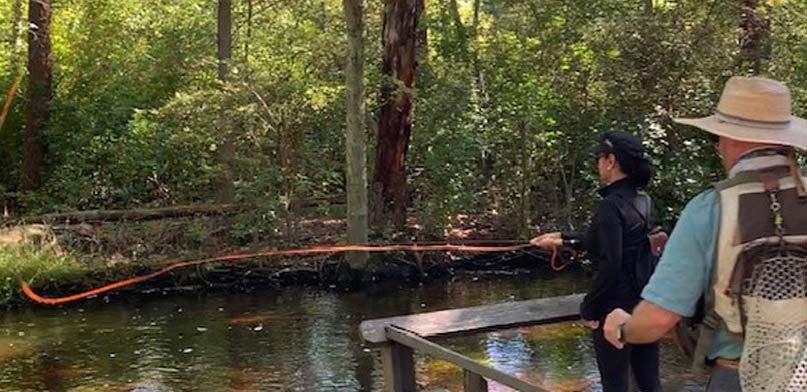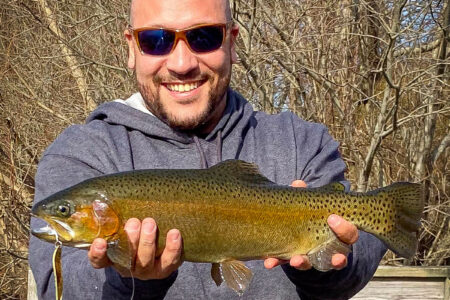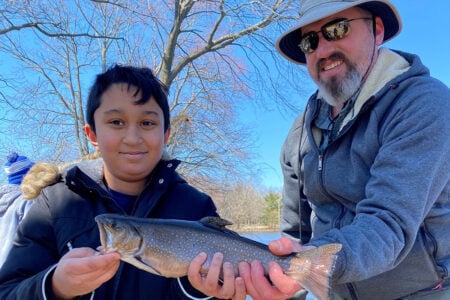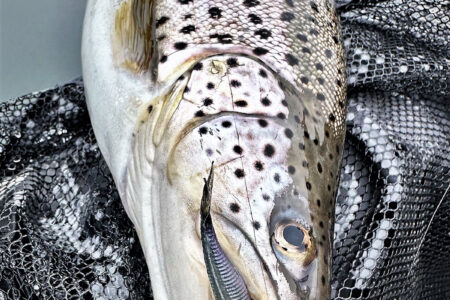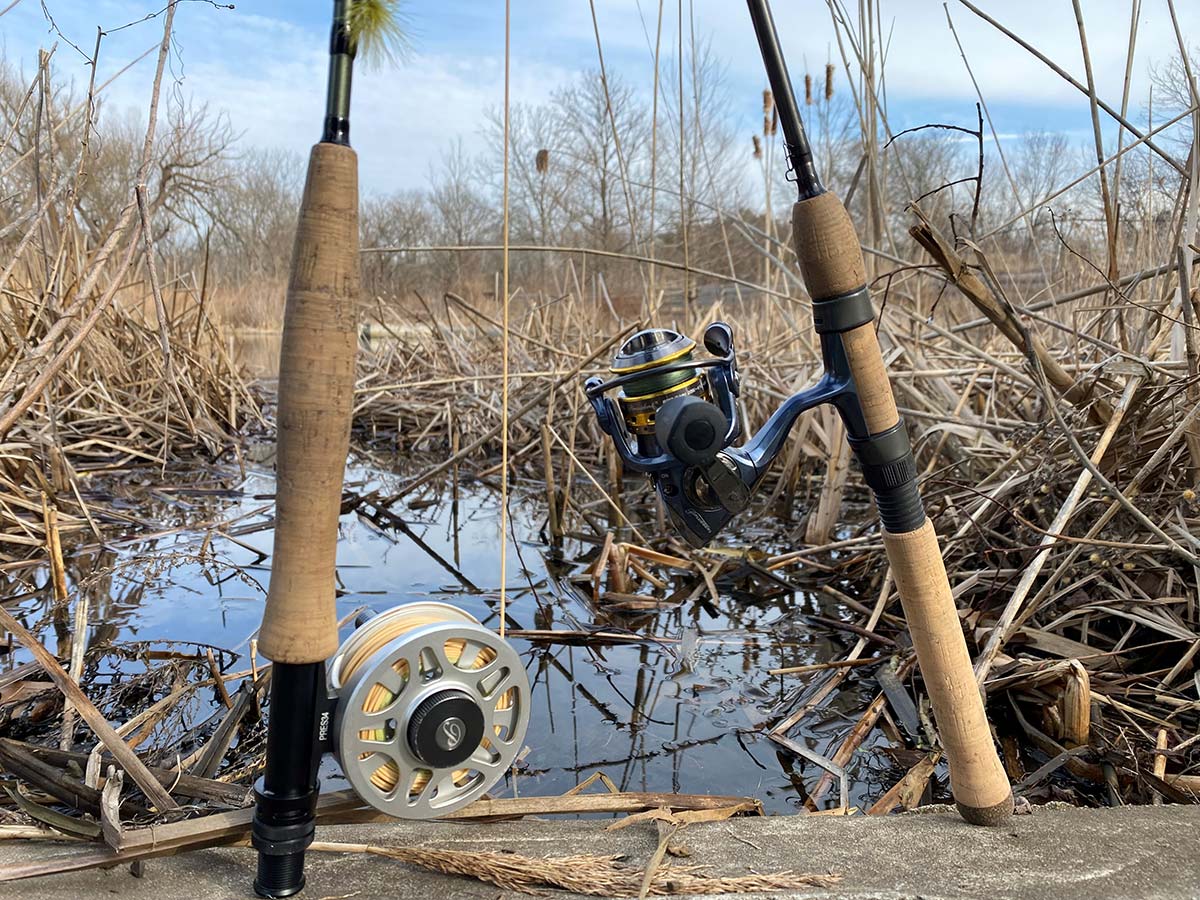
Know when to use a spinning rod, fly rod, or both!
When the month of April rolls around, many anglers have one thing on their mind—stocked trout! I’ve always considered the trout stocking at my local lake here on Long Island as the unofficial way to kick off my season and put a bend in the rod. Along with many others, we anticipate this time of the year for the same reasons. And while we all have fun targeting these fish year after year, using just one method to catch them can start to feel ‘played out’. In recent years I have started to use both fly and spin to keep things fresh. For a breakdown of the scenarios that I choose to use spinning, fly, or both, continue along with this feature.
Take A Spin
I think it’s safe to say that most anglers start with a spinning rod before graduating into a fly fishing setup. The plain and straightforward answer to this is that it is easier to control and cast a spinning rod than a fly rod. I followed this route as well. While I have incorporated the fly rod into my plan of attack every season, I always have a spinning rod for trout in my truck ready to go at all times.
The spinning rod offers some obvious advantages to the fly rod. One of those is the significant distance you can achieve with a spinning rod compared to a fly rod. While distance isn’t always needed in rivers and creeks, it does come in handy when fishing lakes and ponds after the trout begin to spread out. Casting and retrieving a lure with a spinning rod will allow you to cover more water as well in a shorter time. I’ve found that trout schools tend to stick together at times, so once you get one fish to bite, you should be able to get a few more after that. These fish do school up because they used to sitting in a pen of schooled up fish at the hatchery for almost their entire life.
Trout also tend to sit under bridges and tunnels in the shade, waiting for easy meals to come by. Sometimes you won’t have the room to present a fly properly to a trout in this scenario. A spinning rod will allow you to make accurate casts and reach fish that you couldn’t with a fly.
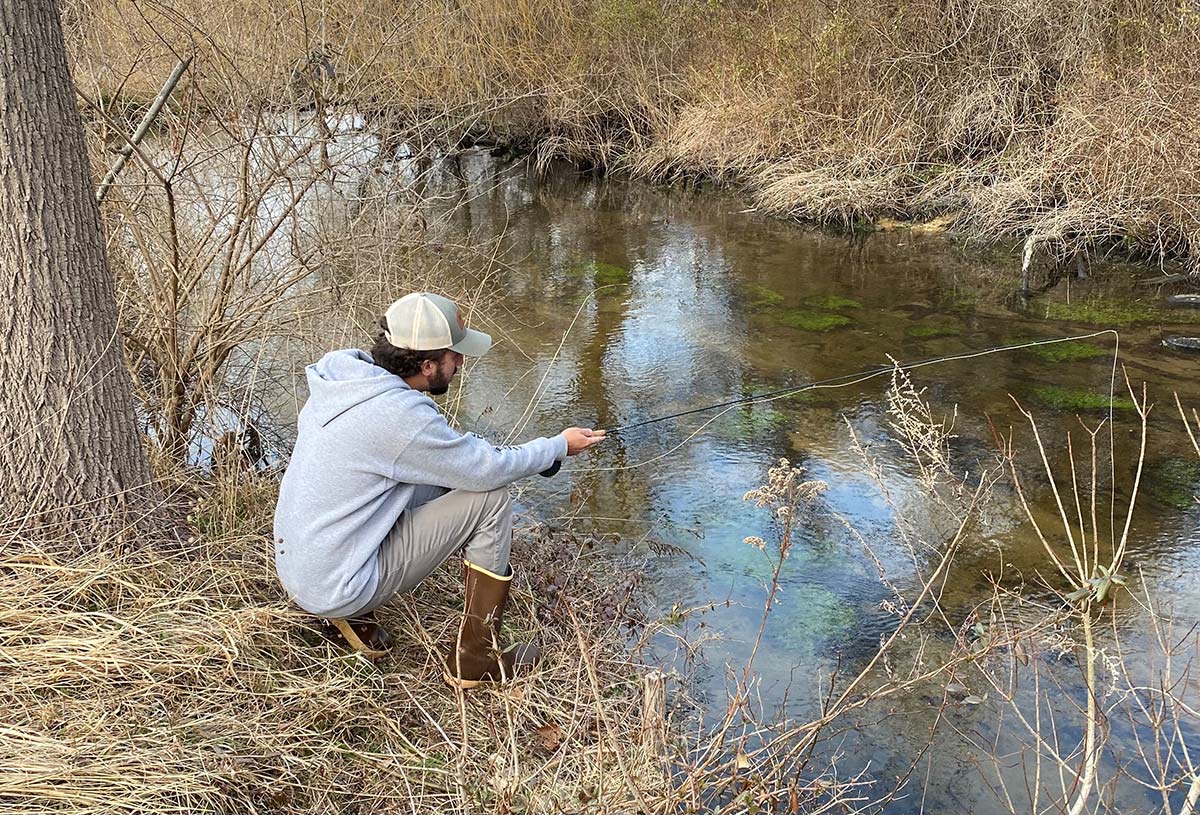
Time To Fly
A fly rod and trout go hand in hand. It’s not the first technique I was taught in trout fishing, but I did learn to appreciate it after some time of using it. The joys and rewards of using a fly rod for trout are many. Even laying out the perfect cast is a joy in itself. Add in a hungry trout taking a properly presented offering, and the whole circle becomes complete.
Fly fishing is more than just a rewarding way to catch trout. It does offer some distinct advantages over using a spinning rod. Have you ever seen trout come up and feed on the surface on an actual fly so small that you can’t even see it? Once a hatch occurs, this will be a commonality down at your local stocked lake. While you can still dupe a foolish stocked trout once in a while with a small lure during this type of feed, you will find much better luck presenting a fly to a trout when this type of situation arises. Freshly stocked trout lack “lake smarts,” if you will. These fish are trained to feed at a specific time of the day, every day with pellets. These new stockers will hit just about anything that plops in the water but keep in mind they will wise up quickly after repeatedly seeing the same lure run in front of their face. Once trout do wise up, wielding a fly rod can really pay off.
A fly rod also comes in handy when fishing smaller creeks and rivers. Once you get the hang of the roll casting technique in fly fishing, you can utilize it in these types of areas. Drifting a small weighted fly with a small strike indicator can be a deadly way to fish for trout in moving water. This type of fishing is tough to do with a spinning rod. Using a fly fishing setup will ensure a more natural presentation resulting in more bites.
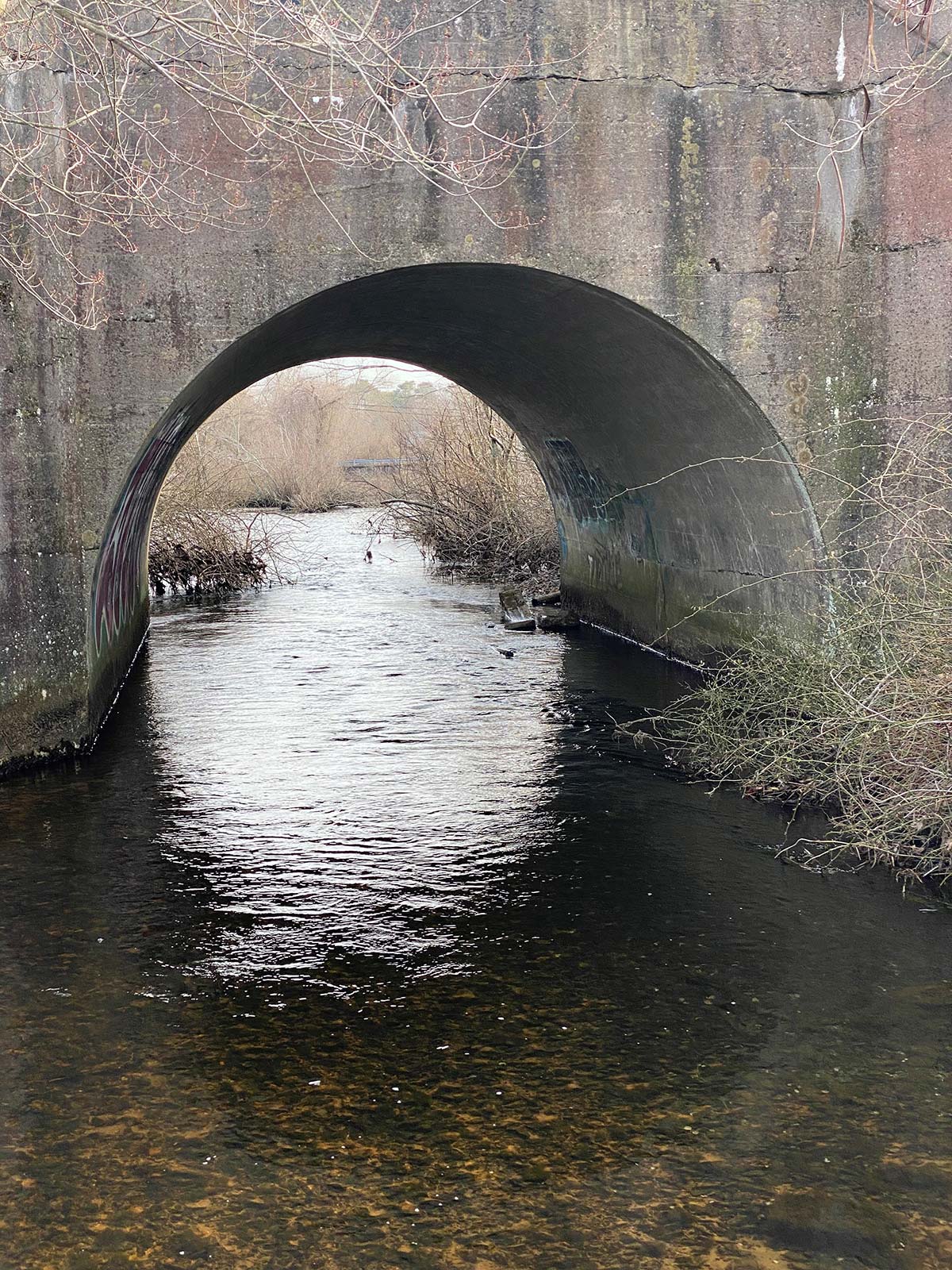
Set Yourself Up
So many different setups exist on the market these days. The number of choices can be overwhelming to a beginner. I do have to admit I tend to go lighter on most of my setups in all types of fishing but when it comes to right the mindset, “light is right,” is the correct one. My lake and pond rods are longer, while the short sticks come out in tighter quarters such as rivers and creeks. Without mentioning brands, I’ll break down my ideal setups for spin and fly fishing in the locations below.
Lake/Pond Spinning: 6 to 7-foot rod; 2 to 6-pound line; 1/32 to 3/16-lure rating.
River/Creek Spinning: 5-foot rod; 2 to 6-pound line; 1/32 to 3/16-lure rating.
Lake/Pond Fly: 9-foot rod; 5 weight.
River/Creek Fly: 7-foot 6-inch rod; 3 to 5 weight.
These days I don’t just carry one rod, but both types of rod. Sometimes if I get enough fun out of one type, I’ll switch over to the other and give it a go. The idea is to keep your options open and don’t get stuck on just one method. Be aware of when one may be more beneficial than another and apply it to you trout fishing this spring.
| WOMAN’S FISHING AT CONNETQUOT |
| By Angelo Donofrio
The hypnotic sound of the babbling brook leading to the fish hatchery at Connetquot State Park was often interrupted with cheers of celebration and support for the women anglers fly fishing at the 2nd Annual Long Island Women’s Fishing Expo. The program brought lady anglers of all ages and skill levels to experience fly fishing. Anglers were partnered with over a dozen seasoned pros of the sport, including veteran fly fishermen Paul McCain, Suzanne Soloman, Karin Stainkamp, and John Daleo, who gave individualized support and instruction throughout the day. Sessions were separated into four time slots—about an hour each—allowing individual hands-on direction along the banks of the Connetquot River. Fly identification, casting, working currents, and hook setting were covered during the event. Many brook trout were netted and released from start to finish. There were also plenty of casting lessons taken advantage of in the dedicated “Casting Field,” which was also pairing anglers with their fly fishing instructors for a variety of hands-on directions. Participants included singles, couples, mother and daughters, and even granddaughter and grandfather teams; such as the team of veteran angler John Daleo and his granddaughter Molly Lehner who, when asked what she enjoyed most about fishing, quickly replied, “cause I get to spend more time with my grandpa and also just for the fun of it,” which was undoubtedly solidified by the several nice catches that Molly made that day. The beauty of the park, coupled with fantastic weather, proved to be a success. Regardless of whether the cast was perfect or attached to a tree limb, whether the trout were netted or so gracefully spit the hook, or if the drift was perfect or not, a lot of fun and friendship was had the event. A lot was also learned and experienced regarding the art of fly fishing. So much so that several first-timers even vowed to continue fishing because of the experiences they had. When attendees were not fishing or casting or telling fish stories, the event also offered tours of the beautiful hatchery and gristmill. Folks also had the opportunity to visit the display tables and engage in conversation with a variety of representatives of both local groups and New York State departments and resources, including DEC Freshwater Fisheries, I FISH NY Program, NYS Office of Parks Recreation and Historic Preservation, DEC Marine Resources, Friends of Connetquot, ArtFlick Trout Unlimited, DEC Aquatic Invasive Species, DEC Law Enforcement, River Bay Outfitters, Idle Hour Fly Fishing Club, LI Fly Rodders, Save The Great South Bay, The Center for Environment Education and Discovery, and of course The Fisherman Magazine. The event was coordinated by NY DEC and NY Parks, Recreation and Historic Preservation, and spokesperson Heidi O’Riordan who is the Regional Fisheries Manager with the NY DEC for Suffolk County expressed how pleased she was to have over 45 participants and the several participating supporters displaying information and guidance throughout the event. Heidi and the entire team warmly welcomed the excitement to get back out doing these types of outreach events and interaction with the public throughout the day, making it an absolute success and “Must Do” for 2022. To inquire about exploring or fishing Connetquot State Park, please call (631) 581-1005. |
